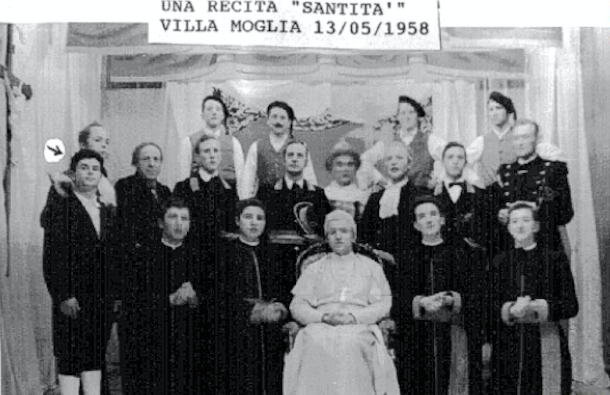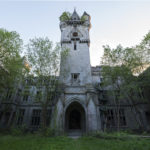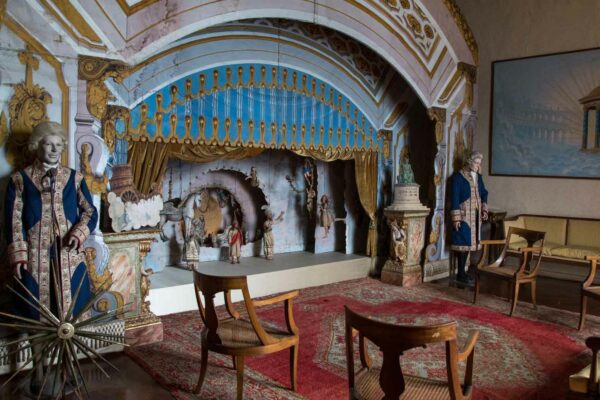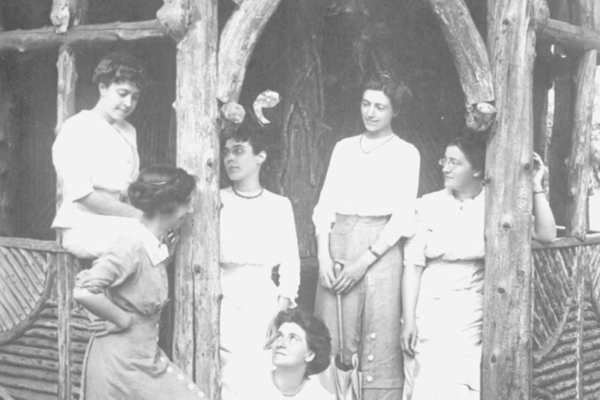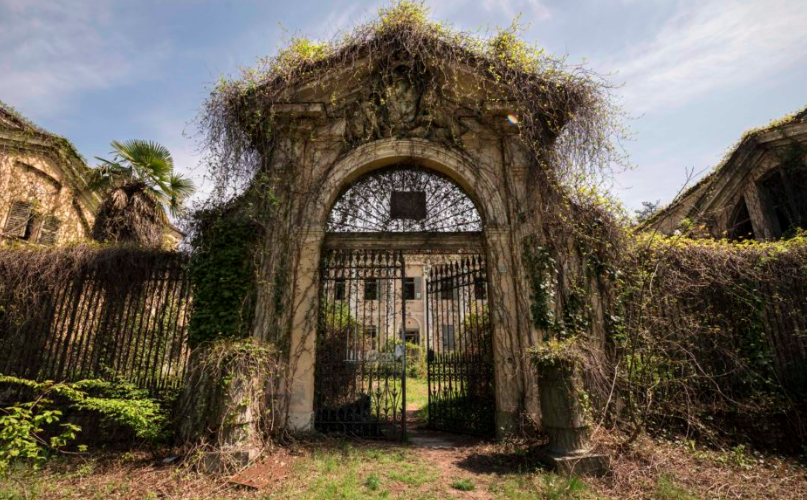
©Matthew Hampshire
When Matthew Hampshire drops us a line, we know it’s time to head into the belly of yet another crumbling beauty. This time, the photographer gave us a peek inside one of his lushest expeditions to date, in the hills of northern Italy at the ghostly Villa Moglia. Step behind her gates for yourself, but be warned: she’s a heartbreaker, and she’s for sale.
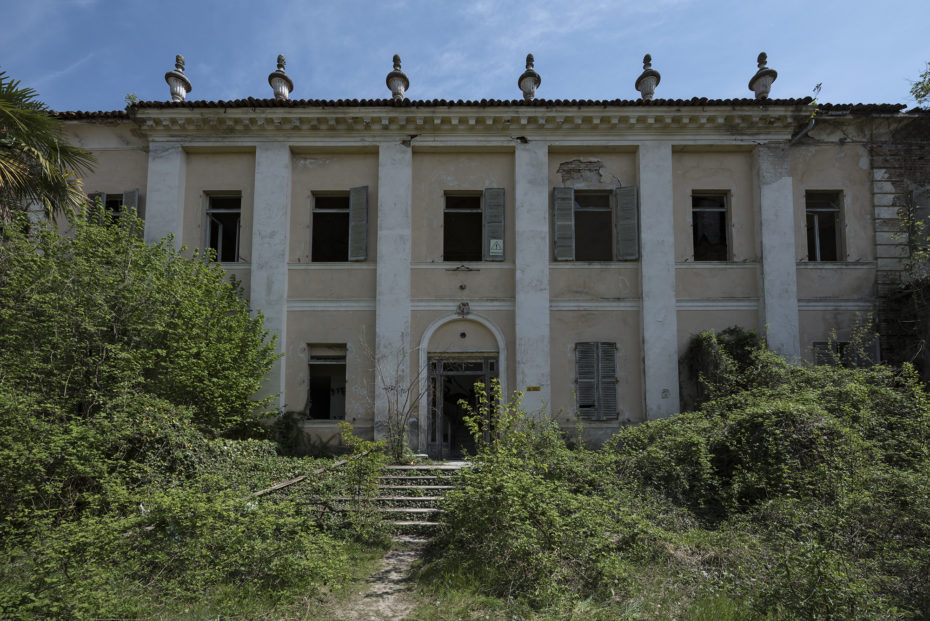
©Matthew Hampshire
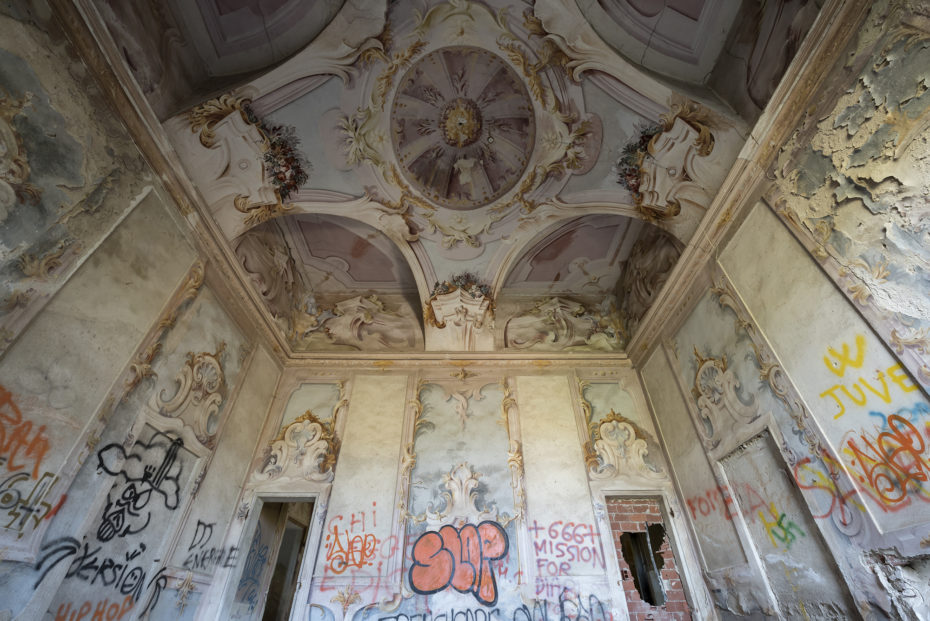
©Matthew Hampshire
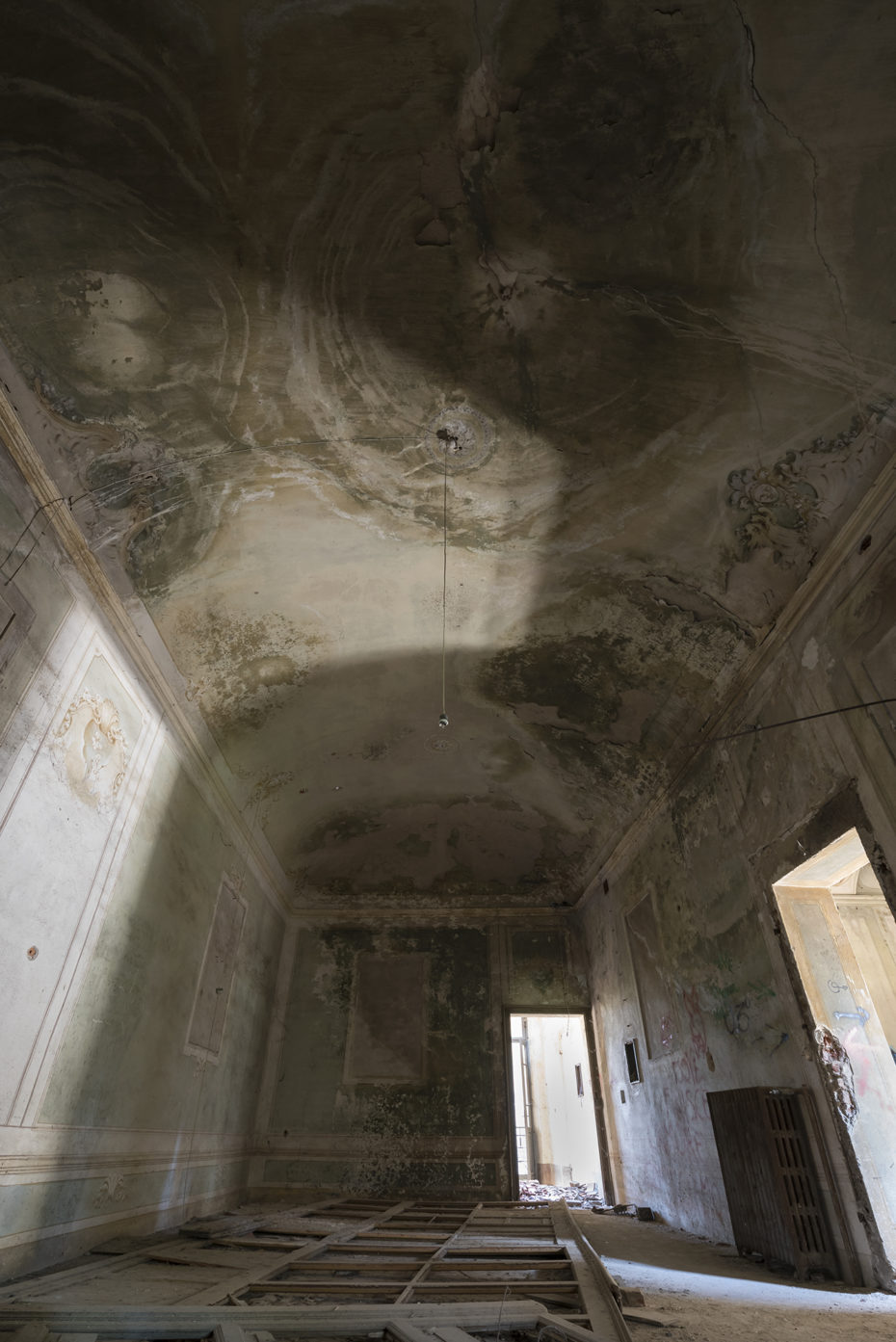
©Matthew Hampshire
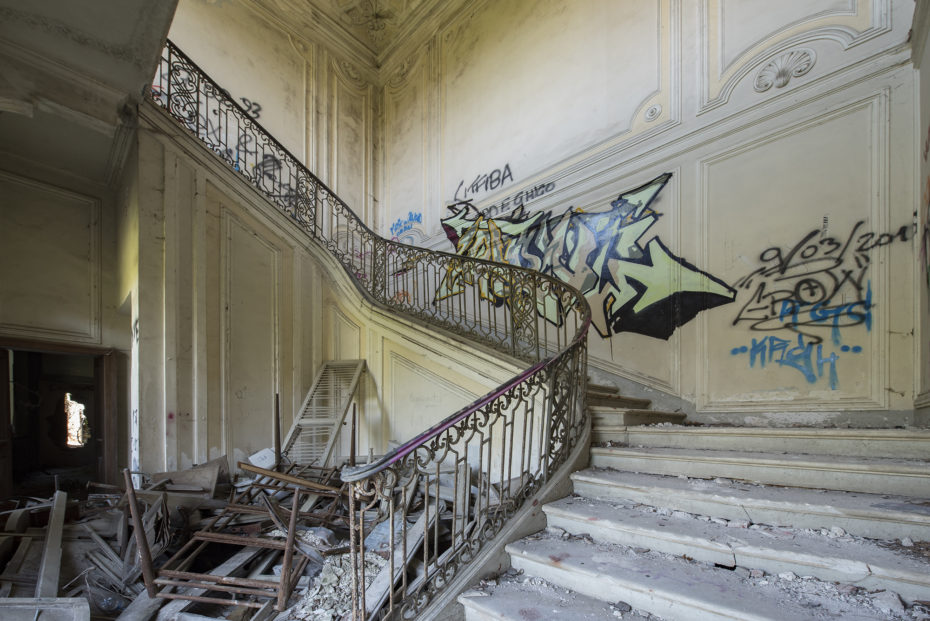
©Matthew Hampshire
“I came across this villa after being tipped off by a friend about it,” Hampshire told us of the estate. “ [I] had been warned that people call the police as soon as they see anyone go near it, and I was lucky enough to get up to the amazing gates without being seen and, as they were unlocked, and the front door was missing, I managed to get in.” From there, he not only had to be safe and stealthy, but incredibly fast. That dramatic photo of the vine-covered gates? He had to “grab [it] on the way out rather than risk it on the way in”– a good urbex exploration tip in general.
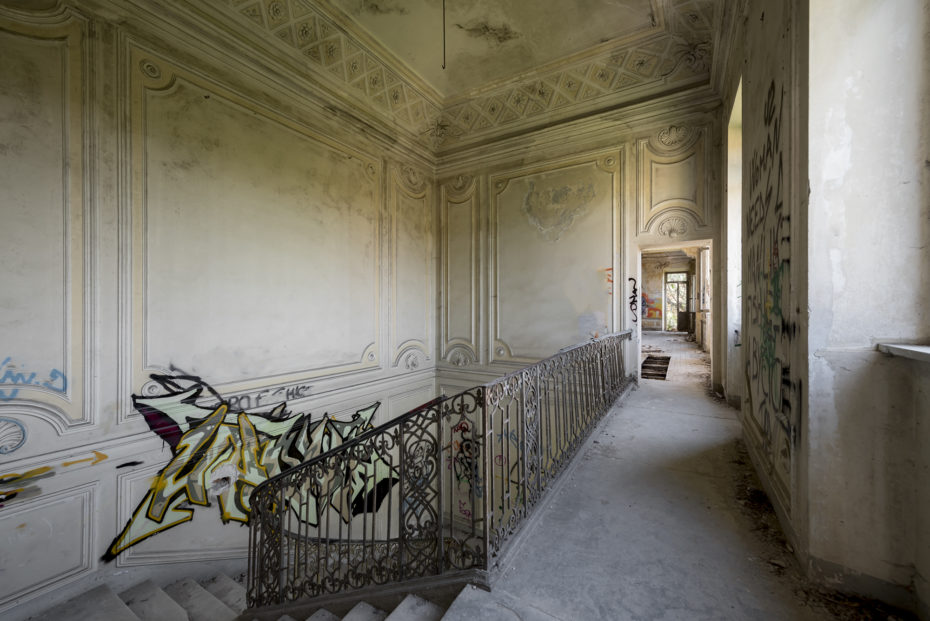
©Matthew Hampshire
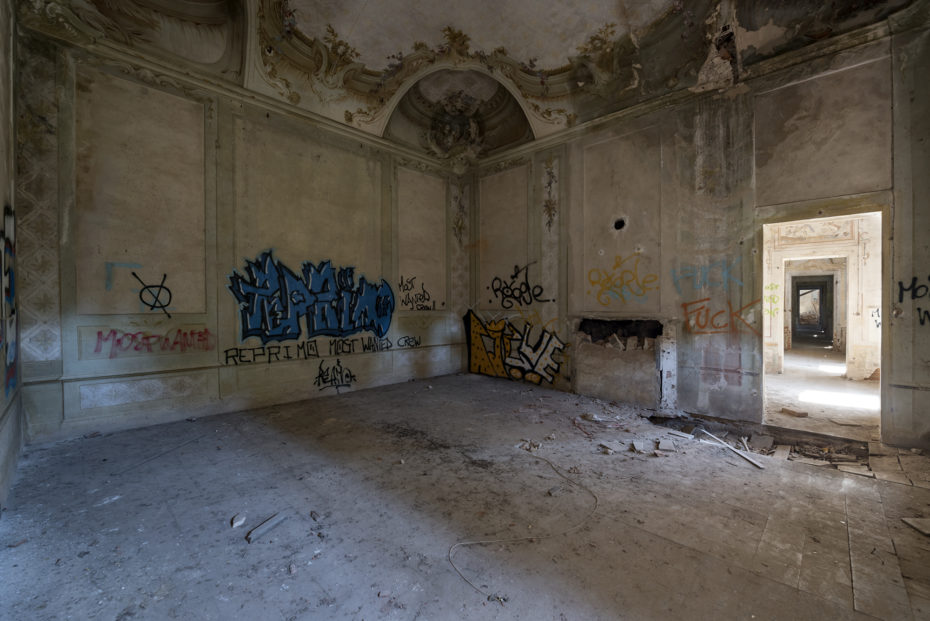
©Matthew Hampshire
“The thing that struck me most,” he said about Moglia, “was the contrast between the amazing architecture, and the horrendous vandalism and graffiti that was evident in nearly every room. How people can do this to such a beautiful building I will never understand.”
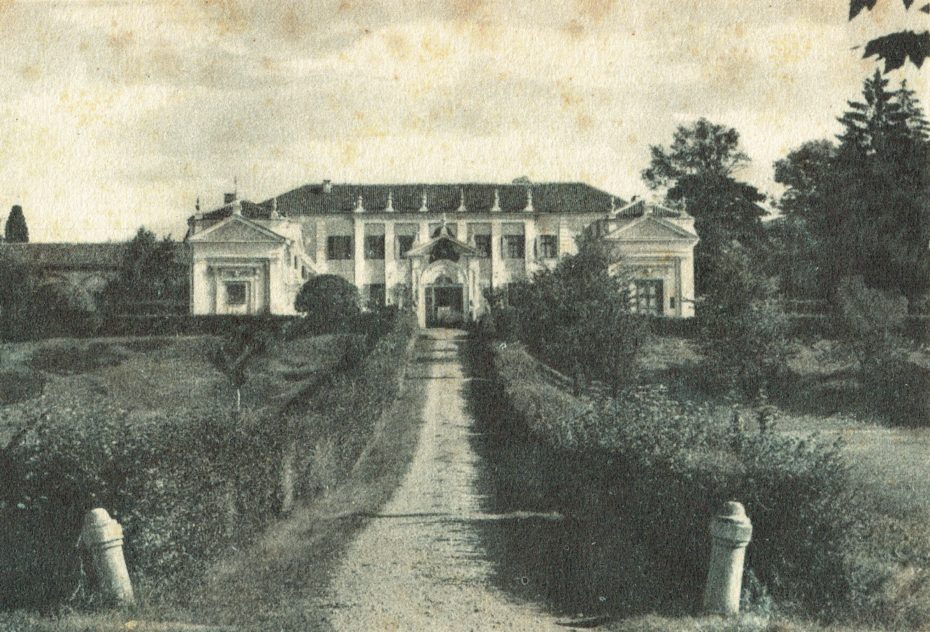
The villa in the 1950s.©Wikimedia Commons.
The villa dates all the way back to the 1600s, when the marchese di Priè, Ercole Turinetti, ran a successful spinning mill on the site. It’s a mere drop in the seven acres of sunbaked land and mulberry plants (although those were for the silk worms, to be fair). These days, reported the local paper Il Torenese, folks say they see ghosts of the children who worked in the factory…
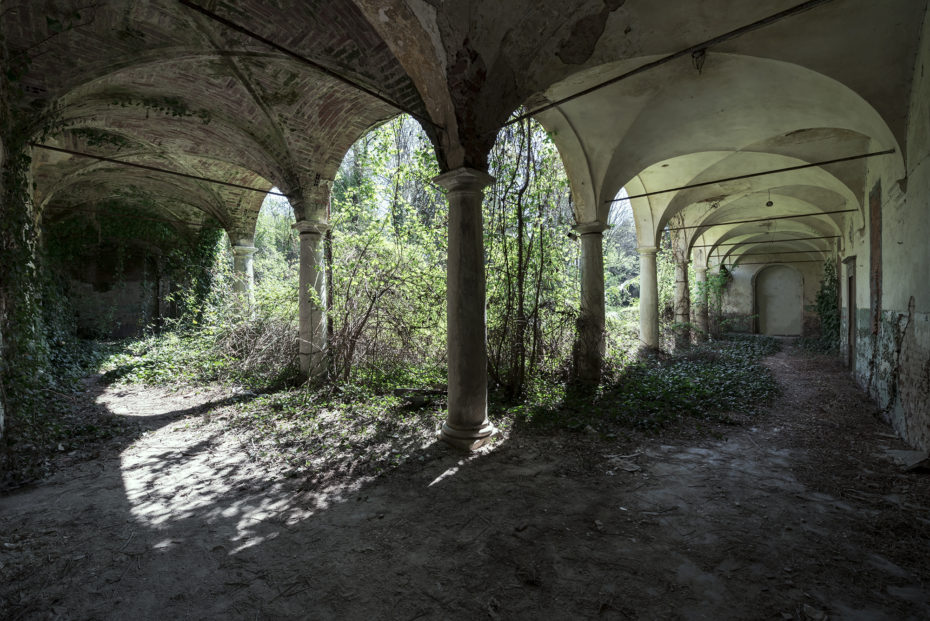
©Matthew Hampshire
It was Turnitti’s grandson who transformed the factory to a mini-palace, and commissioned an architect (either Nicolis de Robilant, or Luigi Barberis. The jury’s out) to actually built the villa around the heart of the factory. Hence it’s weird, U-shaped blueprint:
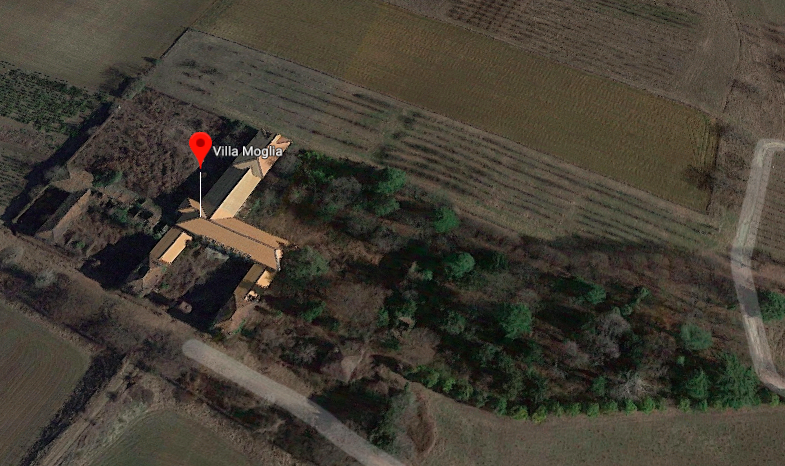
The Villa Circa 2018. ©Google Maps
He had two wives in his lifetime, but died childless in 1798. Since then, it’s been home to a Count from Genova, who later made it a missionary centre for the Catholic Salesian Institute. It’s thought that its missionary period called for the installation of the theatre where, in lieu of a stage, the chairs face a barred off window:
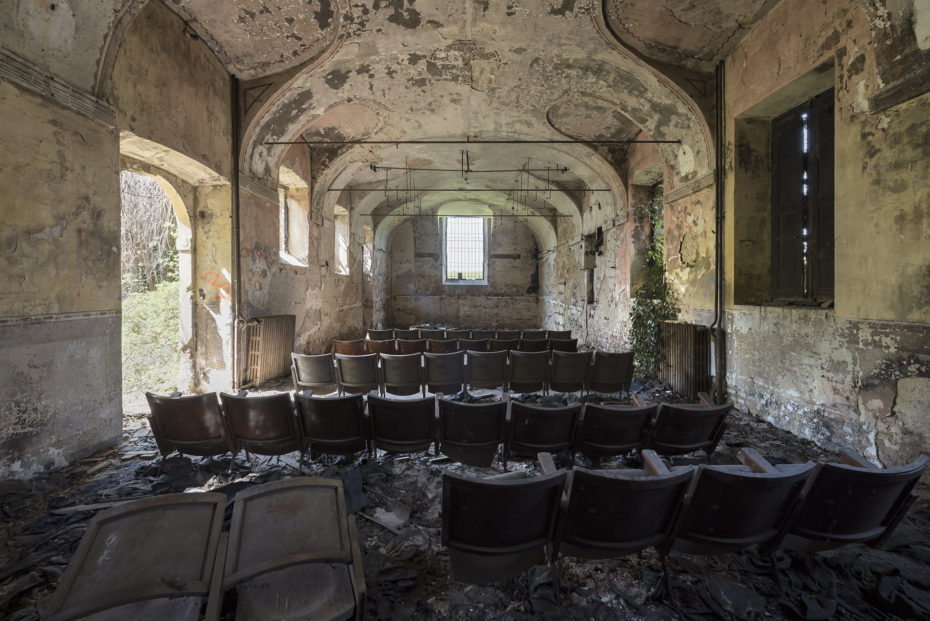
©Matthew Hampshire
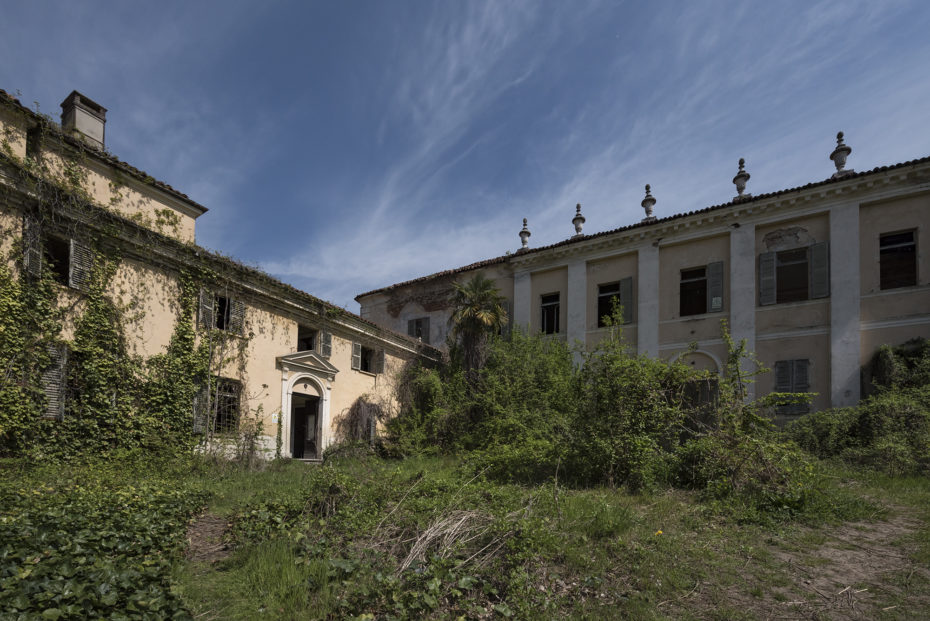
©Matthew Hampshire
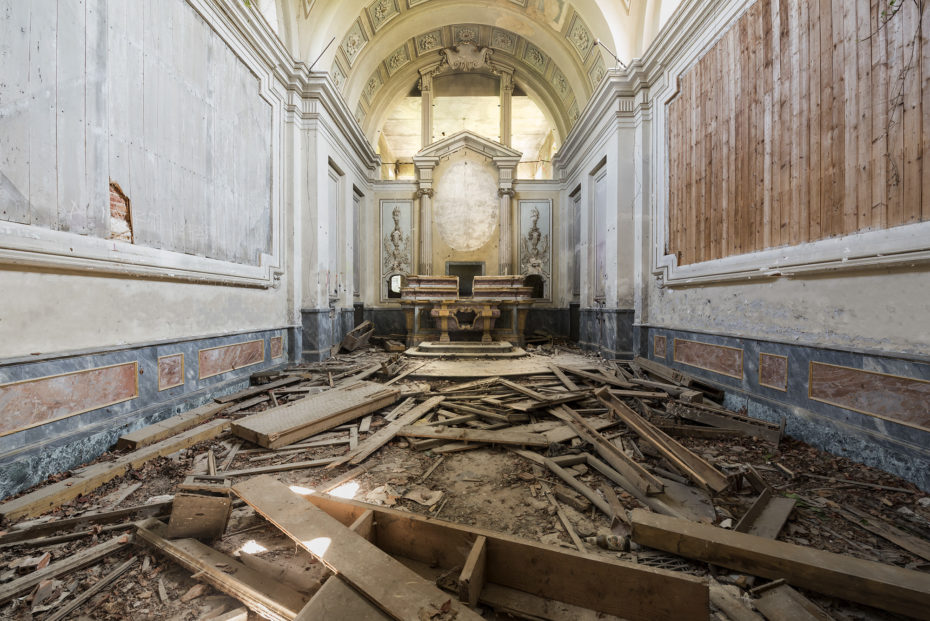
©Matthew Hampshire
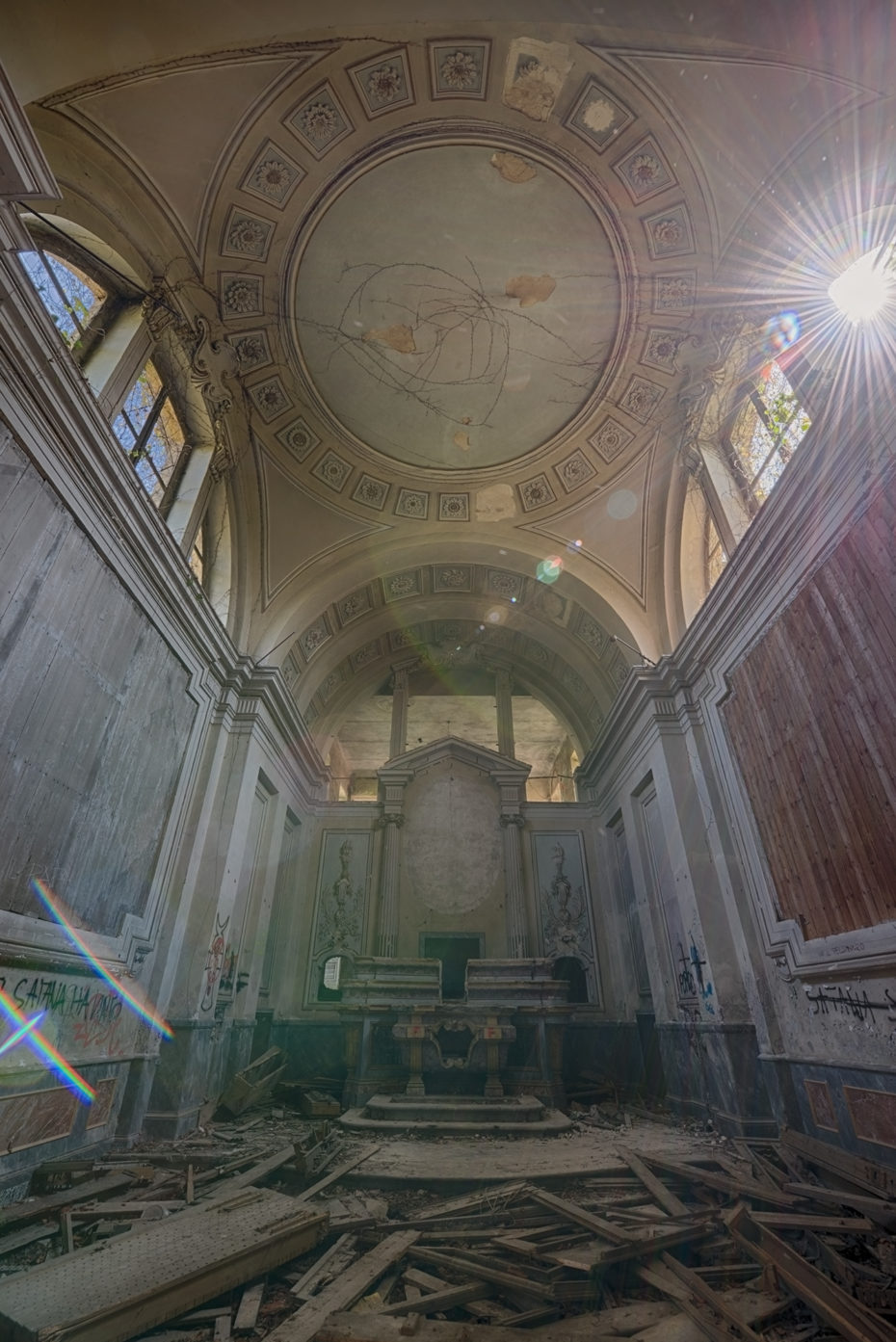
©Matthew Hampshire
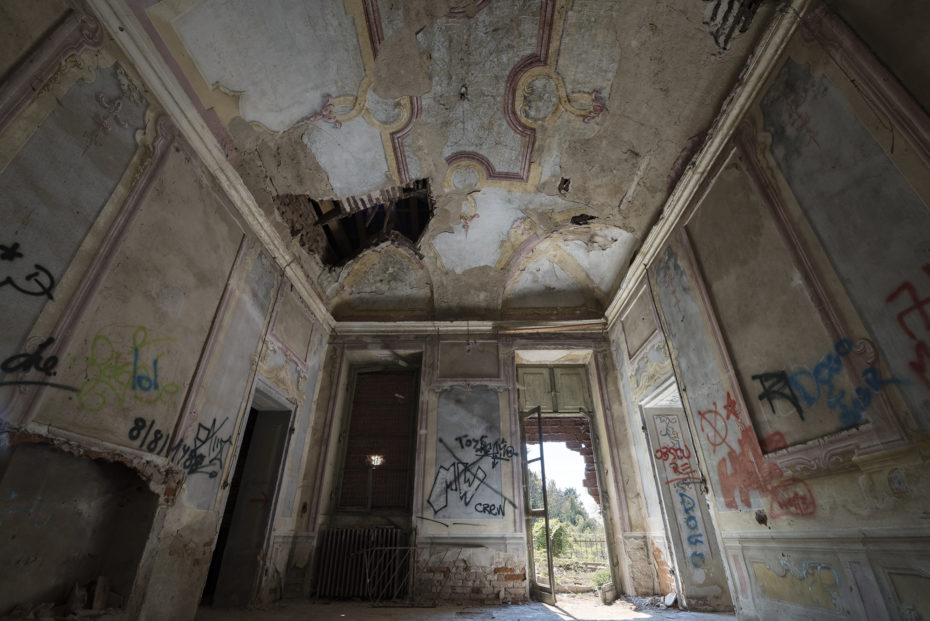
©Matthew Hampshire
When the Count ran out of the money, Moglia ran out of luck. The rich decor was sold, and for about twenty years now it’s been in utter abandon. It’s a tragic fate, but think of it like this: for anyone on the lookout for a serious fixer-upper, now is your time to hop a plane to Italy, and make that Under the Tuscan Sun villa-revamp fantasy a reality. Currently, she’s on the market with Chiusano & Co., whose listing specifies a 6,140 metres squared surface area, over five bedrooms, a few baths…
Learn more about Matthew Hampshire’s work on his website keep up with him on Instagram, and Facebook


